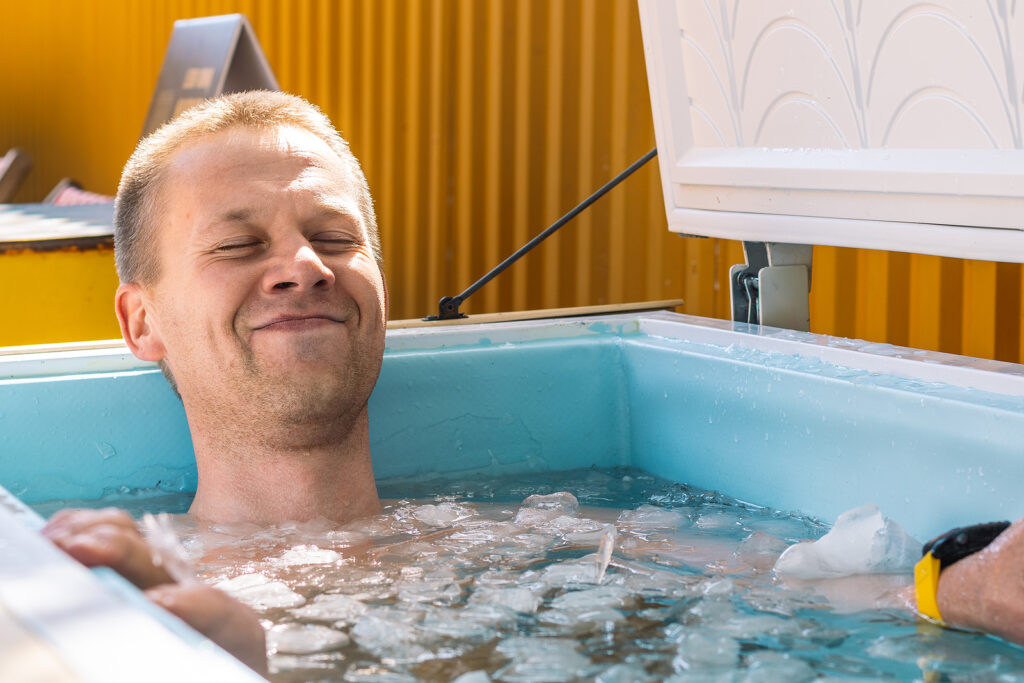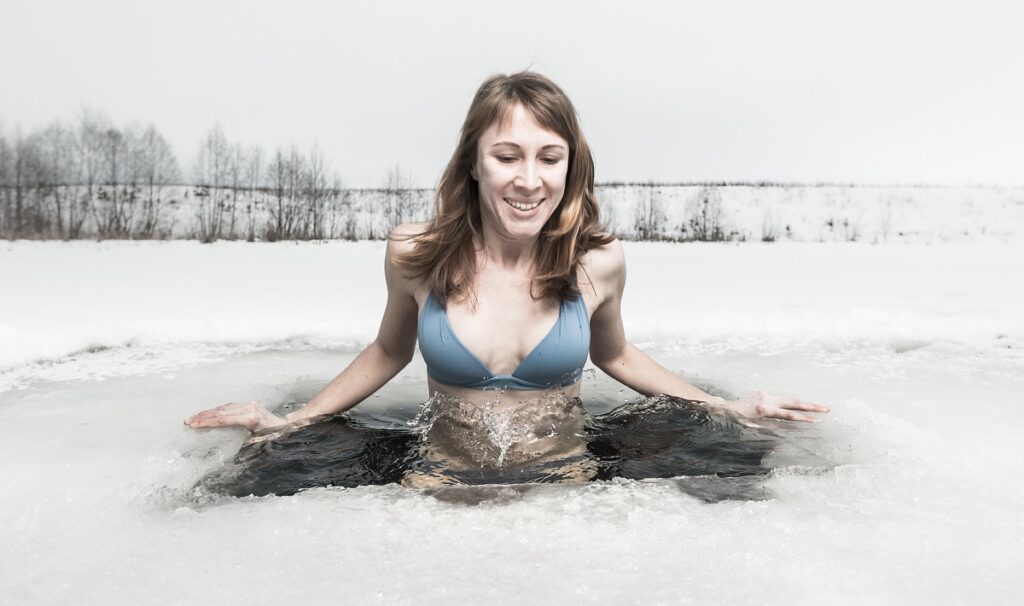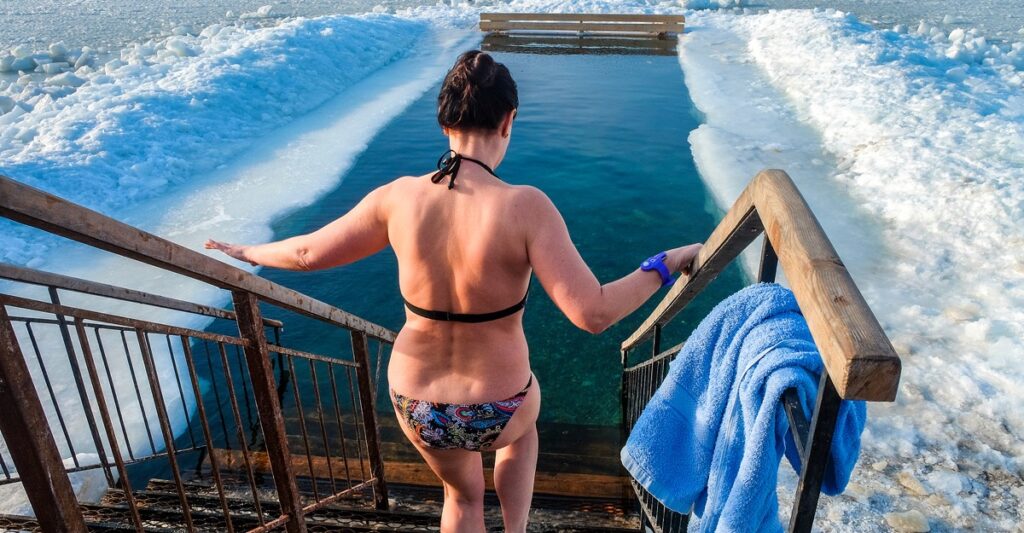Cold plunging, when done correctly is safe for everyone. However, engagingin the practice without proper training and guidance can be dangerous. The practice of immersing oneself in cold water can have profound effects on the body, such as improving circulation, reducing inflammation, and boosting mental clarity. However, the intense shock that cold water brings to your system can pose risks, especially for individuals with certain health conditions. Understanding the potential dangers and knowing how to safely approach cold plunging is crucial. In this article, we’ll explore how to benefit from cold plunging, who should avoid it, and the precautions necessary to ensure safety.
How Cold Plunging Affects the Body
When you immerse your body in cold water, several physiological responses occur immediately. The cold causes blood vessels to constrict, which helps improve circulation by sending blood toward vital organs. Heart rate increases, and breathing may become more rapid due to the shock of the cold. For many, this results in a burst of energy and heightened alertness, along with the release of endorphins that elevate mood.
However, these rapid changes can also strain the body, particularly for those with pre-existing conditions. Blood pressure can spike, and the sudden constriction of blood vessels may put extra stress on the heart and circulatory system. This can lead to potential dangers for those with underlying health concerns, making it essential to understand how the body reacts before attempting cold plunging.
Who Should Be Cautious or Avoid Cold Plunging?
Cold plunging is not a universal practice, and certain groups should approach it with caution or avoid it entirely. For individuals with heart conditions, such as hypertension, arrhythmias, or a history of heart attacks, the sudden change in heart rate and blood pressure may pose significant risks. Cold water immersion can cause the blood vessels to constrict too much, increasing the workload on the heart and potentially leading to cardiovascular complications.
Similarly, people with respiratory conditions like asthma should be careful. Cold air and water can trigger breathing difficulties or exacerbate symptoms. Pregnant women should also consult a healthcare provider before attempting cold plunging, as the shock of cold immersion could cause stress on the body during pregnancy.
Additionally, those with Raynaud’s disease, a condition that causes the blood vessels in the extremities to overreact to cold temperatures, should avoid cold plunging altogether. This practice can worsen symptoms, leading to pain, numbness, or even frostbite in severe cases. Children and the elderly may also be at greater risk, as their bodies may not regulate temperature as effectively as adults in peak health.
Pre-existing Medical Conditions and Cold Plunging
Anyone with a pre-existing medical condition should seek advice from a healthcare provider before beginning cold plunging. Conditions like diabetes, which affect circulation and the body’s ability to heal, can complicate recovery from the intense cold exposure. People with high or low blood pressure are also at risk, as cold plunging can lead to sudden drops or spikes in blood pressure, increasing the likelihood of fainting or heart problems.
Autoimmune disorders and circulatory issues also require careful consideration. While cold plunging may have anti-inflammatory benefits, it could potentially exacerbate symptoms in some autoimmune conditions. Therefore, a personalized approach is key for anyone dealing with chronic health issues. Discussing risks and benefits with a doctor can help determine whether cold plunging is a safe practice for those with chronic health concerns.
Safe Cold Plunging Practices
For those in good health who are cleared to try cold plunging, safety should always be a priority. Starting with shorter plunges and gradually increasing the duration helps the body acclimate to the cold. A typical session might begin with 30 seconds to a minute in the water, building up as tolerance improves. It’s also essential to maintain proper warm-up and cool-down routines. Stretching or light exercise before plunging helps warm the muscles, while a thorough warm-up reduces the risk of injury or shock to the system.
It’s also important to monitor the water temperature closely. Ideal water temperatures for cold plunging range from 50°F to 59°F (10°C to 15°C), which is cold enough to trigger the body’s response without causing harm. If you experience intense shivering, numbness, or dizziness during a cold plunge, it’s crucial to exit the water immediately and warm up slowly.
The Value of Finding a Cold Plunge Coach
For those new to cold plunging, having a professional coach or guide can be incredibly valuable. A cold plunge coach not only provides expert advice on how to safely navigate the practice but also helps you maximize the benefits while minimizing risks. Many people are drawn to cold plunging for its amazing health benefits—such as improved recovery, better circulation, reduced stress, and enhanced mental clarity—but they may feel unsure about how to start safely.
A knowledgeable coach can design a gradual approach to cold plunging that suits your fitness level, health condition, and personal goals. Coaches understand the body’s response to cold exposure and can help you build up tolerance over time, ensuring that you don’t overwhelm your system too quickly. They can also help you monitor your reactions to cold immersion, such as how your body responds to changes in temperature and how long you should stay in the water.
Another important benefit of working with a coach is the personalized support you receive. For people with specific concerns—whether it’s a medical condition or just general uncertainty—a coach can provide the reassurance you need to confidently experience cold plunging. They’ll guide you through the correct breathing techniques, proper entry and exit strategies, and post-plunge recovery routines to ensure your safety at all times.
In addition, a cold plunge coach can tailor your sessions to focus on the specific benefits you’re aiming to achieve, whether it’s boosting mental resilience, speeding up physical recovery, or enhancing overall wellness. This guidance helps you experience the full range of cold plunging benefits without worrying about safety.
By working with a coach, you gain a sense of security that allows you to push your limits without fear, knowing that you’re in good hands. This way, you can fully embrace cold plunging as a powerful wellness practice while prioritizing your health and safety.
Listen to Your Body
As with any wellness practice, it’s important to listen to your body when engaging in cold plunging. While the health benefits can be significant, safety should never be compromised. If something feels off or you’re uncertain about how your body is responding, it’s better to err on the side of caution. Always consult a healthcare professional if you have any concerns about starting cold plunging, especially if you have pre-existing health conditions. Staying informed, recognizing your limits, and understanding your body’s signals are key to safely enjoying the practice.
Ready to Cold Plunge?
If you’re ready to explore the incredible benefits of cold plunging but want expert guidance to ensure your safety, contact us at LumaHealing.com. We offer in-person sessions in the Greater Toronto, Hamilton, and Niagara areas of Ontario, Canada. If you prefer virtual support, we can set up a Zoom coaching session tailored to your needs. Reach out to us at [email protected] to schedule your session and start your cold plunge journey with confidence!


